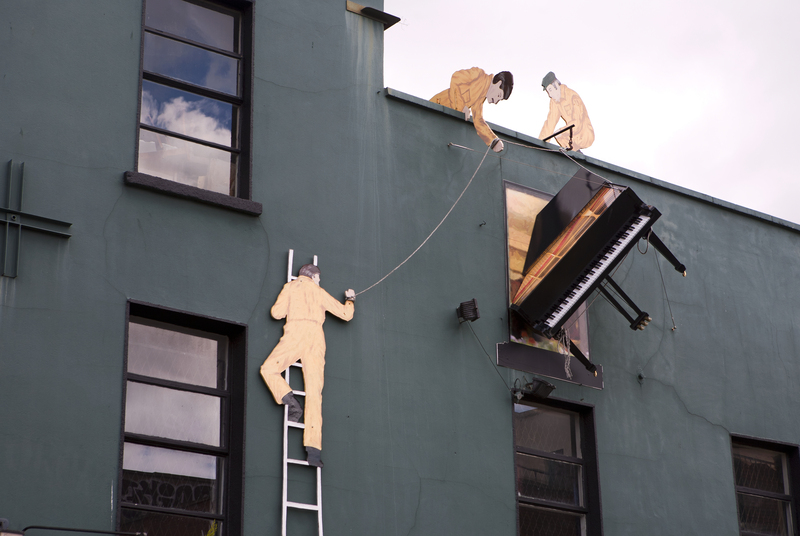Outdoor Space Preparation Guide for Moving
Posted on 04/06/2025
Outdoor Space Preparation Guide for Moving
Moving can be a stressful and challenging event, particularly when it comes to ensuring that all aspects of your property, including your outdoor spaces, are adequately prepared. While indoor spaces often receive the most attention, your garden, patio, and exterior structures also require careful planning and effort. This comprehensive guide aims to ease your transition by offering detailed steps and tips to prepare your outdoor space for moving.
1. Plan Ahead
Planning is the cornerstone of any successful move. Start by creating a comprehensive checklist of all the tasks related to your outdoor space. These may include:
- Cleaning the garden
- Removing outdoor furniture
- Taking down structures such as sheds and greenhouses
- Disposing of or transporting plants
- Inspecting the property for potential repairs
Breaking the tasks down into smaller steps can make them far more manageable and ensure nothing is overlooked.

2. Declutter and Organize
Before you start packing, take time to declutter your outdoor space. Dispose of any broken equipment, old pots, and other items you no longer use or need. Once you have identified what to keep, organize them into categories such as tools, d?cor, and furniture. This sorting will make packing more efficient and help you locate items more quickly when you unpack.
3. Clean and Maintain
A well-maintained outdoor space can significantly boost your property's appeal, which is particularly important if you are selling your home.
Lawn and Garden
Mow the lawn, trim the hedges, and pull out any weeds to ensure a tidy appearance. A garden that looks well cared for not only adds value but also makes the moving process smoother.
Outdoor Furniture
Clean your outdoor furniture to make it more presentable and easier to pack. You can use a combination of water, dish soap, and a sponge to scrub down items, then allow them to air dry.
Structures
Examine any outdoor structures, such as sheds, greenhouses, and play sets. Make any necessary repairs to ensure they are stable and safe for transport, particularly if you plan to take them with you.
4. Manage Plants
Plants can be challenging to move, but with careful planning, you can ensure they reach your new home safely.
Small Potted Plants
Small potted plants are relatively easy to transport. You can place them in boxes lined with plastic to prevent soil spillage. Ensure they are well-watered before the move, but avoid overwatering to prevent leaks.
Large Plants and Shrubs
For larger plants and shrubs, you may need to dig them up carefully, ensuring you dig deeply enough to capture most of the root system. Wrap the root ball in a burlap sack to protect it and keep it moist.
5. Safely Pack Outdoor Items
Packing outdoor items requires different strategies than packing indoor items due to their size, material, and exposure to the elements.
Furniture
Disassemble larger pieces of outdoor furniture if possible, to make them more manageable. Use bubble wrap or moving blankets to protect surfaces from scratches and dents. Secure all bolts and screws in labeled plastic bags and tape them to the corresponding furniture pieces.
Tools and Equipment
Clean and dry all garden tools to prevent rust and damage during transit. Sharp tools should be wrapped in old towels or bubble wrap to ensure safety. For larger equipment like lawnmowers, ensure they are emptied of fuel to avoid leaks.
6. Address Structural Elements
If you plan to take down structures like sheds, greenhouses, or play sets, do so methodically.
Sheds
Empty the contents first and clean the interior. Disassemble the shed following the manufacturer's guidelines. Label each part carefully to facilitate reassembly at your new home.
Greenhouses
Greenhouses can be tricky due to the glass panes. Remove the glass panels first, then disassemble the frame. Ensure all parts are securely packed to avoid breakages.
7. Document the Process
Photograph your outdoor space before you start the packing process. This documentation will serve as a useful reference point for both dismantling and reassembling structures. It can also be helpful for any moving insurance claims should damages occur.
8. Coordinate with Movers
If you are employing professional movers, notify them about the outdoor items and structures you plan to take. Provide details about any particularly large or heavy items, as this will help them prepare appropriately. Ensure that the movers can easily access these items to reduce delays and potential damages.
9. Prepare for the Unexpected
Even the best-laid plans can encounter hurdles. Have a contingency plan for unexpected weather conditions, such as rain or extreme heat, on the moving day. You might need tarps to cover items or ensure sensitive plants are kept in a controlled environment until they can be moved.

10. Final Inspection
Once everything is packed and ready to go, perform a final walkthrough of your outdoor space. Check that all items are packed, no tools or small pieces have been left behind, and every structure is in the desired condition for the new occupants.
Conclusion
Preparing your outdoor space for moving might seem like an overwhelming task, but with careful planning and execution, it can be a smooth and efficient process. By following this comprehensive guide, you can ensure that your garden, furniture, and structures are moved safely and effectively, allowing you to enjoy your new home without unnecessary hassle. Remember, a well-prepared outdoor space can significantly enhance your moving experience and set the stage for a fresh start in your new home.







